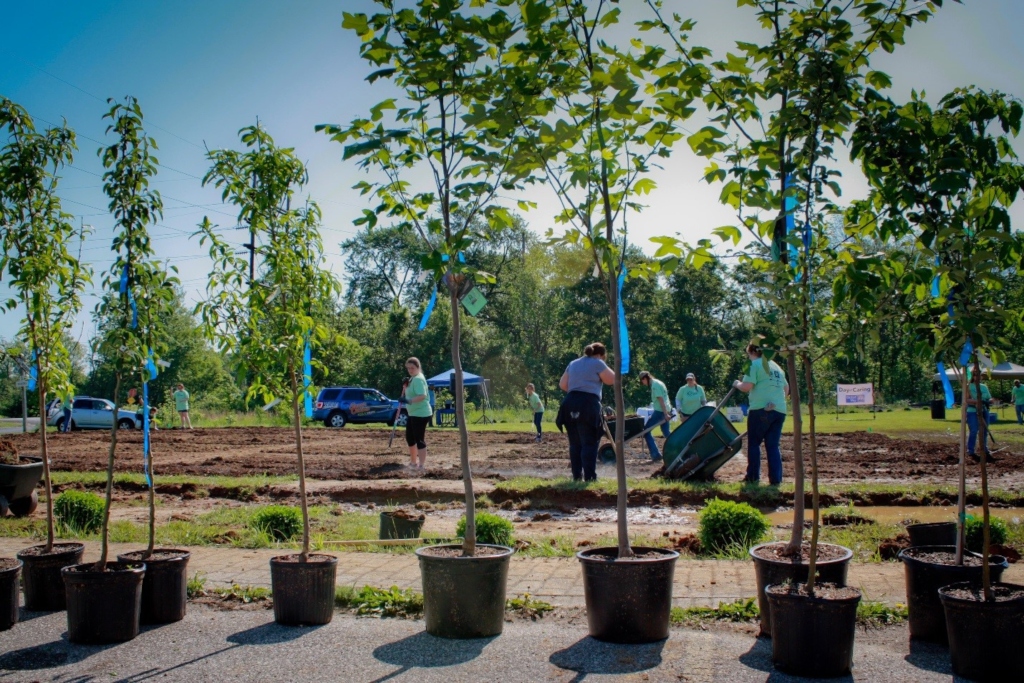Garden Park is larger than Bedford’s original community garden and is only two blocks away from a previous pocket park that has since had its playground equipment relocated to the new Garden Park. It has been in use for two years, and is home to 72 active plots and eight raised beds. Many plots are used by gardeners to grow food for their own households, and some are used to grow for enjoyment—food from these plots is donated to households or shelters in need.
After the garden was established, the community got creative. The park now also includes a quarter mile walking trail, 40x80 foot greenhouse, tool shed share program, bee hive program, and several bird and bat houses. There is also a community orchard with apple, pear, and peach trees, and a wild berry patch. An Americans with Disabilities Act compliant playground and restroom were constructed. The Park partnered with United Way to build a Born Learning Trail, which includes a series of interactive signs with learning activities for young children and their families. In 2018, the Park decided to honor local Rosie the Riveters—women who worked in factories and shipyards during World War II—and created a memorial rose garden. The entire property was fenced in to protect from deer. In the coming year, local Master Gardeners will be planting a native flower garden, incorporating native corns and hops for local breweries throughout the park, and constructing a garden bed solely dedicated to feeding and raising worms. The Gardeners also plan to build a Native American medicine wheel.
Beyond offering this new infrastructure, the Park engages with a wide range of community groups and hosts events. Volunteer days and educational activities have been held with Purdue Extension, the local 4-H Club, the Boys and Girls Club, Boy and Girl Scouts, the public schools, and more. The Master Gardeners also use the space regularly for educational programming.
Challenges
The project manager from Bedford Parks and Recreation, Barry Jeskewich, reflected that there were not many challenges during this project, but there was one outstanding factor that led to its success:
“Networking and partnerships were the backbone of the success of this project. We grew Bedford’s social resilience by tapping into the sense of ownership and buy-in from community members and partnering organizations. This is what made Garden Park exceed expectations.”



